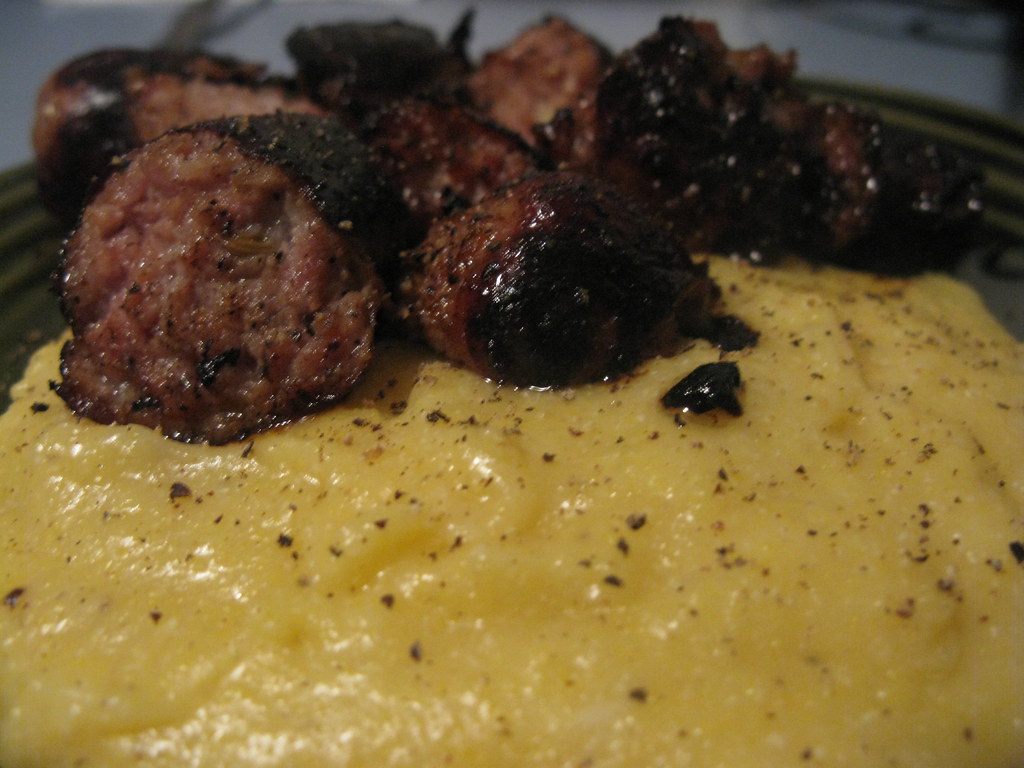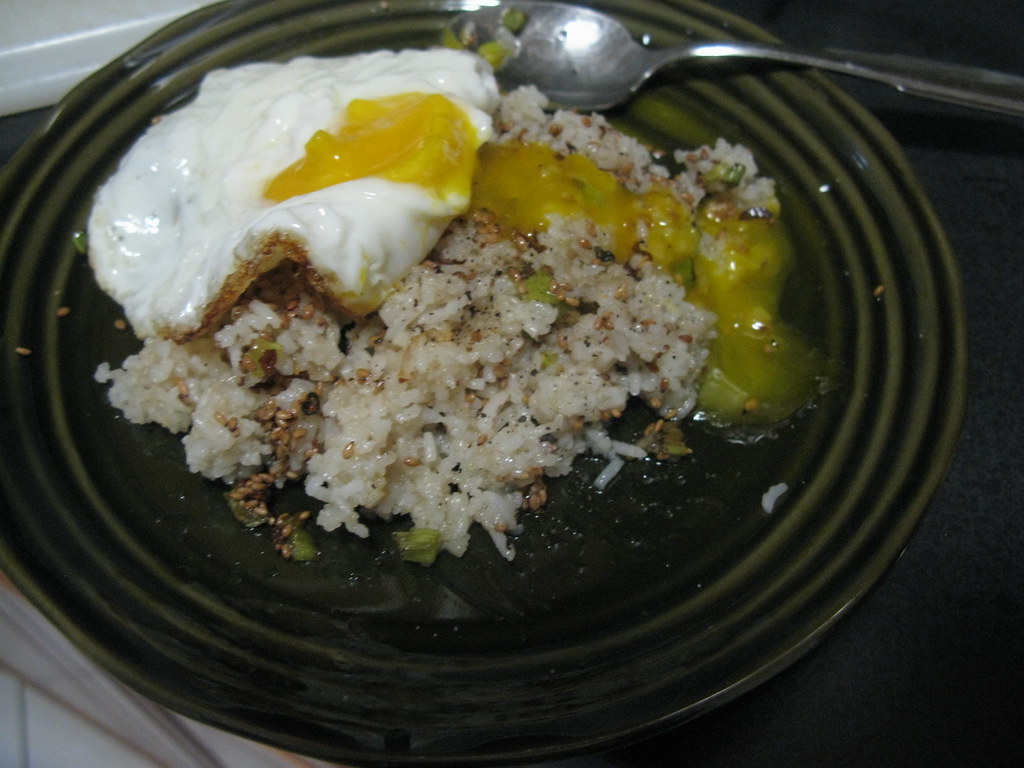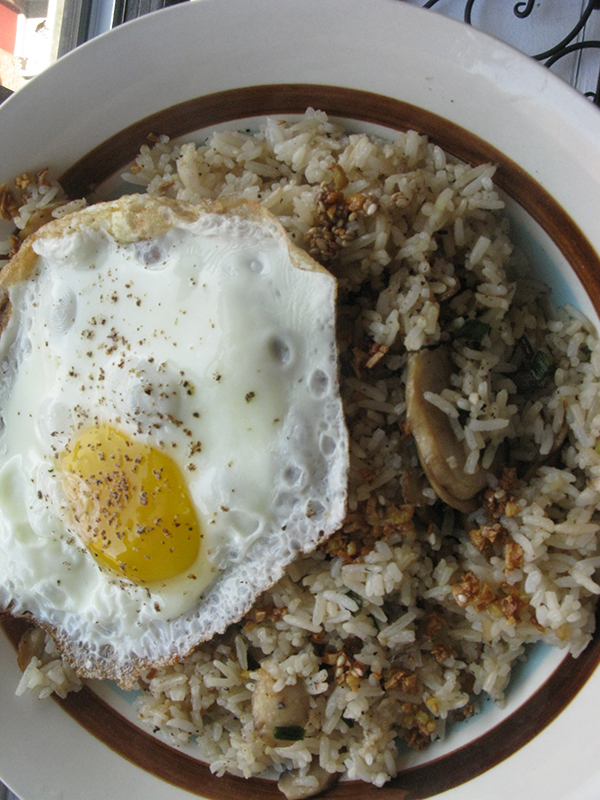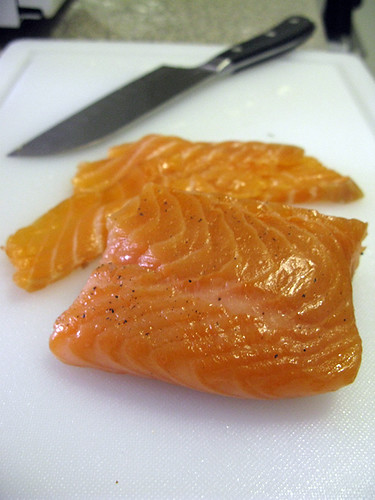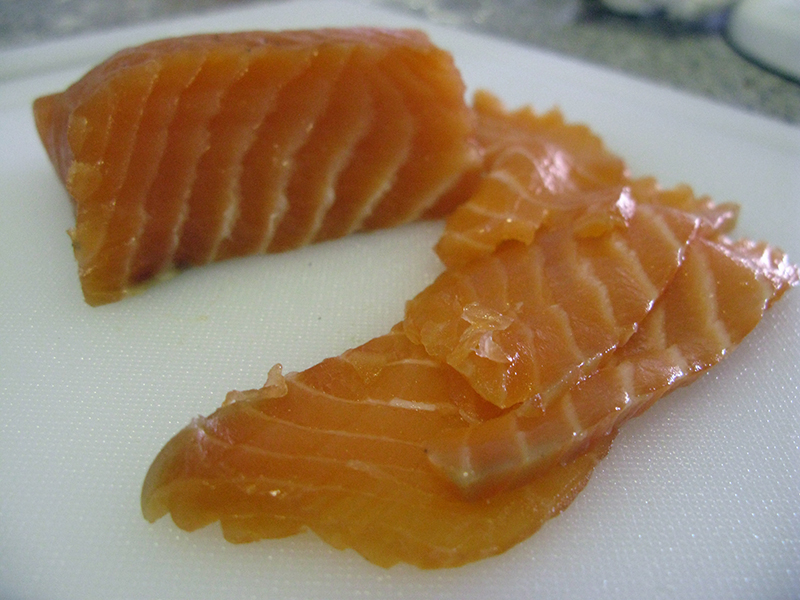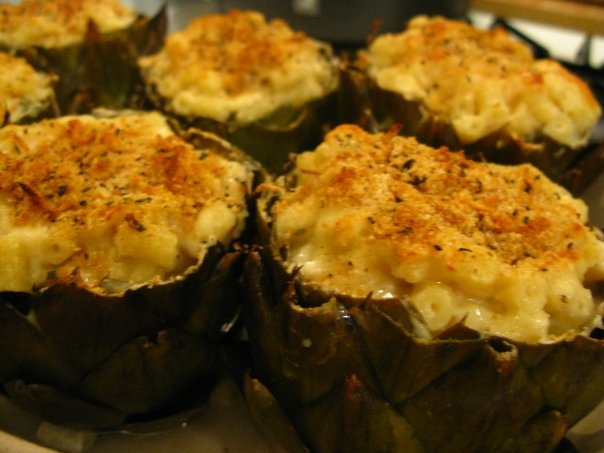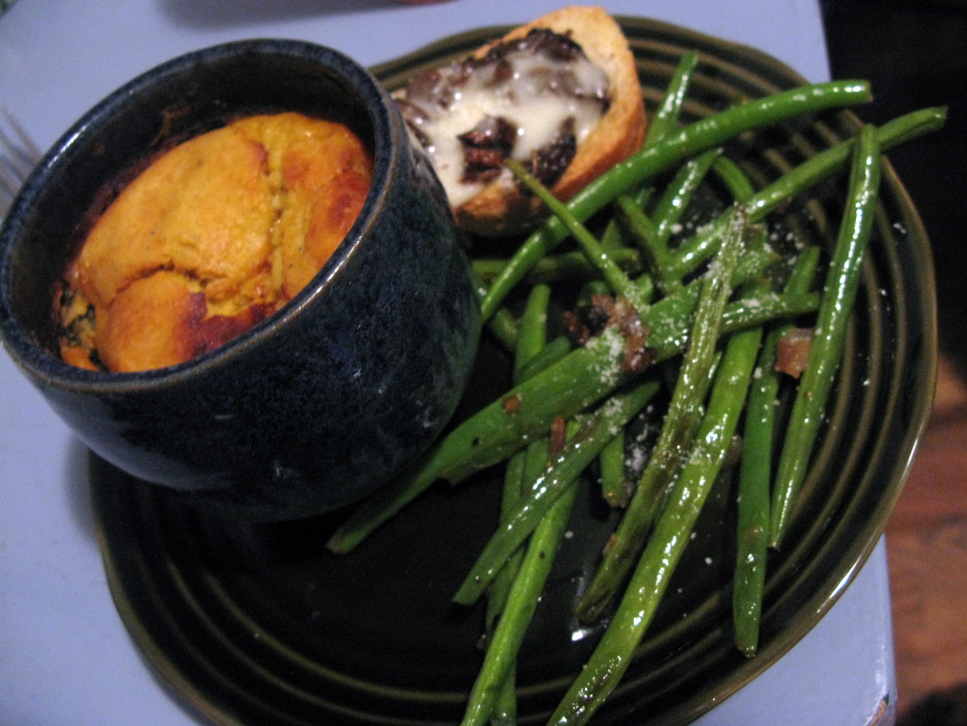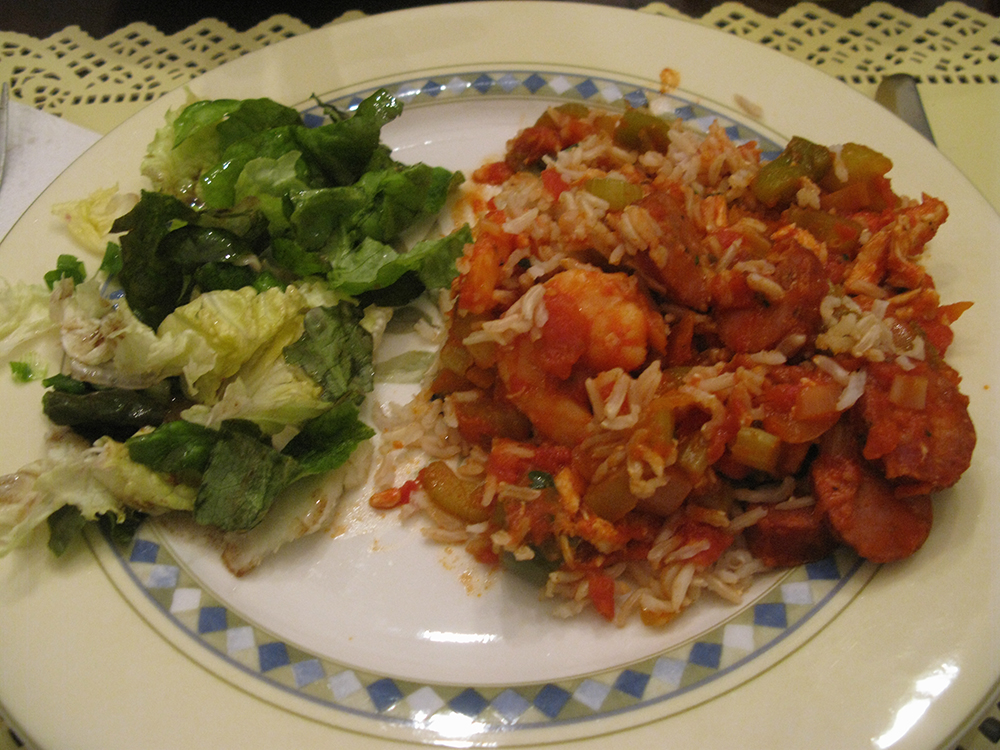I know that most people primarily think me as Italian, but I'm actually nearly half Irish, (with one Austrian great grandfather that I'm not really sure what to make of). When I was growing up, my mom always made a big deal over St. Patrick's Day. We'd always go into the city to see the parade, and have a great big dinner with her sister, Aunt Cathy, my grandma, and her brother, my Uncle James, among other folks. The dinner menu never varied: Irish soda bread, corned beef, boiled potatoes, steamed cabbage with vinegar, and Colman's hot mustard powder, which I only tried once and nearly incinerated my taste buds.
This meal was very different from the pasta and steak and salad variety dinners my parents would prepare the rest of the year, but it was always amazing. The star was clearly the tender, fatty, bright pink corned beef, but all the elements combined to create the perfect meal. Before this year, I had never attempted to recreate my mom, aunt and grandma's St. Patrick's Day feast, but with the holiday falling smack in the middle of the week and busy weekends on both ends, there was no opportunity to go home for my favorite annual March treat. So, for the first time, I took it upon myself to replicate it in my apartment, for what Nathan refers to as "BEEF NIGHT."
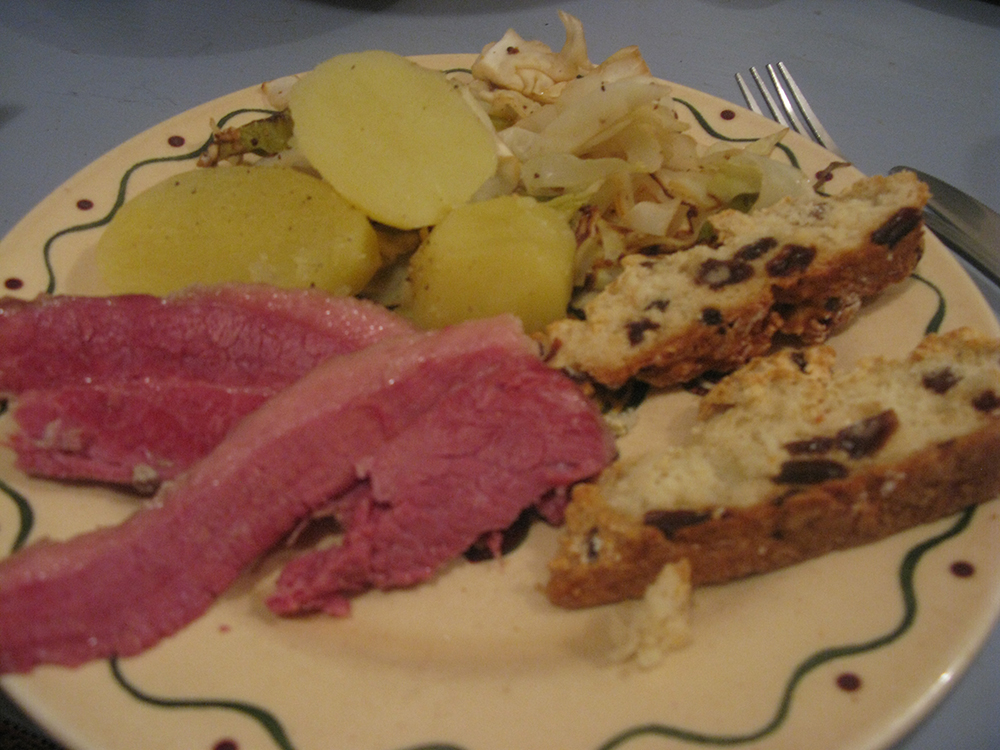 beef night
beef nightI was surprised to discover how straight forward and easy each component of the meal was. That's not to say I got everything exactly right, and nothing was quite as good as my mom/aunt/grandma would make it. Something about perfectly replicating the family classics is just impossible. However, I do feel confident in sharing the instructions with you all, should you feel so inclined to prepare an Irish American feast this evening in honor of the holiday.
First of all, set aside three and a half hours for cooking the corned beef. This is a completely painless process, as you basically leave it alone most of the time, but it does take awhile. After cooking all that time, the corned beef will definitely shrink up a great deal, so plan on a pound to a pound and a half per person. Err on the side of more so you can have awesome corned beef sandwiches from all the leftovers. The best brand, according to my mom, is Friedrich, and you should get the thin cut as it is the most tender. Put the corned beef in a pot and cover it with water. Bring it to a boil and then dump out the water and add fresh water. This keeps it from getting ridiculously salty. Then you put it back on the stove for what my mom described as a "rolling boil," for three hours. My boil was actually too boily, so watch out for that because it will make your beef a little chewy and tough. It was still delicious, but I will definitely watch the flame and the water more carefully next time. Keep it somewhere between a simmer and an outright boil and you should be fine.
 all the fixins for an irish american feast
all the fixins for an irish american feastThe potatoes and cabbage are super easy. I peeled the potatoes and boiled them until soft in salted water. I sliced them into rounds so they would cook faster, but my mom usually only cuts them in half. I think I got yukon gold potatoes, and they were surprisingly delicious with only some butter and freshly ground pepper. Nathan had been bellyaching for mashed potatoes instead, but ended up not missing them in the least.
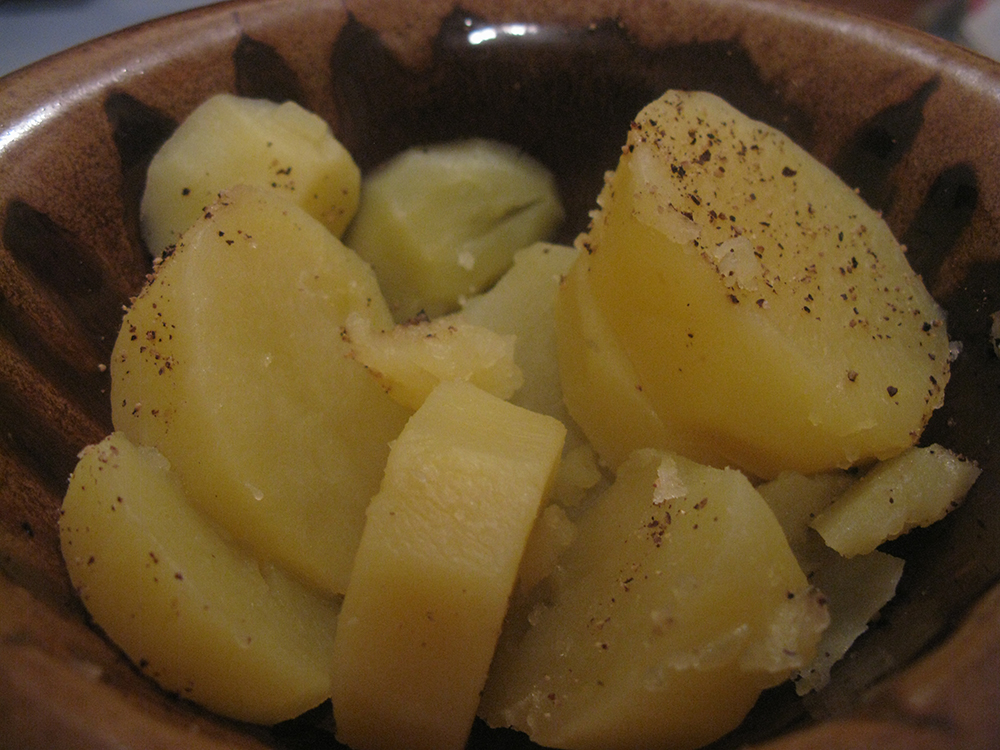 boiled potatoes topped with salt, cracked black pepper, and butter
boiled potatoes topped with salt, cracked black pepper, and butterI sliced up half of a relatively small head of cabbage and cooked it with a few glugs of white vinegar and two spoonfuls of this great grainy dijon mustard that was on sale at fine fare. Of course, the flame went out and since it was on the back burner behind the pot of potatoes it was about 20 minutes before I realized why it was cooking so slowly, aka not at all. Then I obviously cranked up the flame in frustration and all the vinegar and water evaporated too quickly and the cabbage started to burn a little, even while it was still slightly underdone. Whoops. I caught it just in time though, and it was nicely flavored from the vinegar and the mustard despite the burnt-yet-crunchy quality of some of it.
The final part of the meal was the soda bread. In elementary school, my teachers would always have little St. Patrick's Day party for the class. This usually meant green munchkins, sugar cookies and bagels, but I was always called upon to bring in my mom's Irish Soda Bread. (Bridget Dormer's mom always made some too, but even though her dad was legit born in Ireland, their soda bread wasn't as good, so THERE.) I've watched my mom make this, and helped my mom make this, but this year wsa the first time that I actually attempted to make it myself. It is incredibly easy, and super delicious. Unfortunately for Matt, it is the only part of the meal that isn't gluten free, and we've yet to devise an alternative that he can eat.
In honor of it being my grandma's recipe, I will end this entry by posting the whole thing as my mother gave it to me. Like my mom, I used a full cup of raisins, and I made it without the caraway seeds that Aunt Cathy loves so much. If you don't have buttermilk, you can add a tablespoon of vinegar or lemon juice to a cup of milk to achieve roughly the same effect, but with a bread with so few ingredients, this is not recommended.
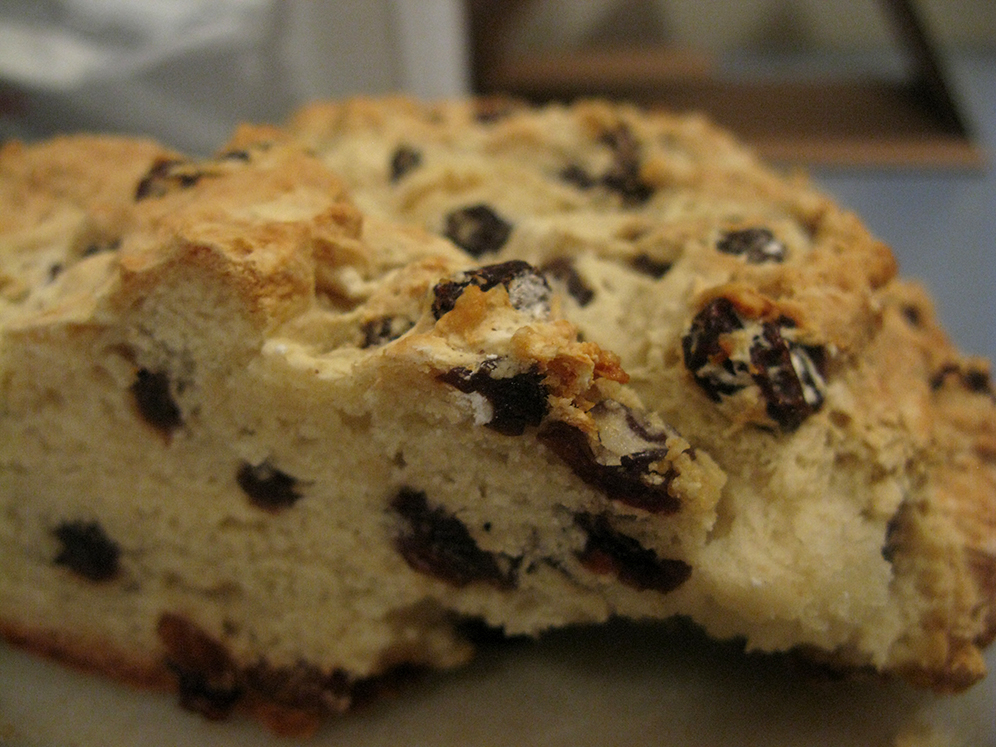 fresh irish soda bread
fresh irish soda breadIrish Soda Bread
2 cups flour
1 1/2 tsp baking powder
1/4 tsp baking soda
1/4 tsp salt
1/2 cup raisins (I think I use 1 cup)
1 tsp caraway seeds (optional)
About 1 cup buttermilk (better to use a little less & then add if needed)
Sift flour, baking powder, soda & salt. Add raisins & seeds. Mix to a soft dough with buttermilk.
Form into oval, cut cross on top & put on ungreased baking pan (sprinkle pan with a bit of flour). Preheat oven to 375. Bake for 10 min., reduce heat to 350 & bake about 30-40 min.
Should sound hollow when you knock on bottom of loaf.
Check expiration date on powder & soda.
If dough is sticky, sprinkle a little bit of flour on exterior.
All in all, we thoroughly enjoyed our meal, and it's simple enough that pretty much anyone could handle it, although Nathan may have bitten off more than he could chew.

his eyes were bigger than his stomach

